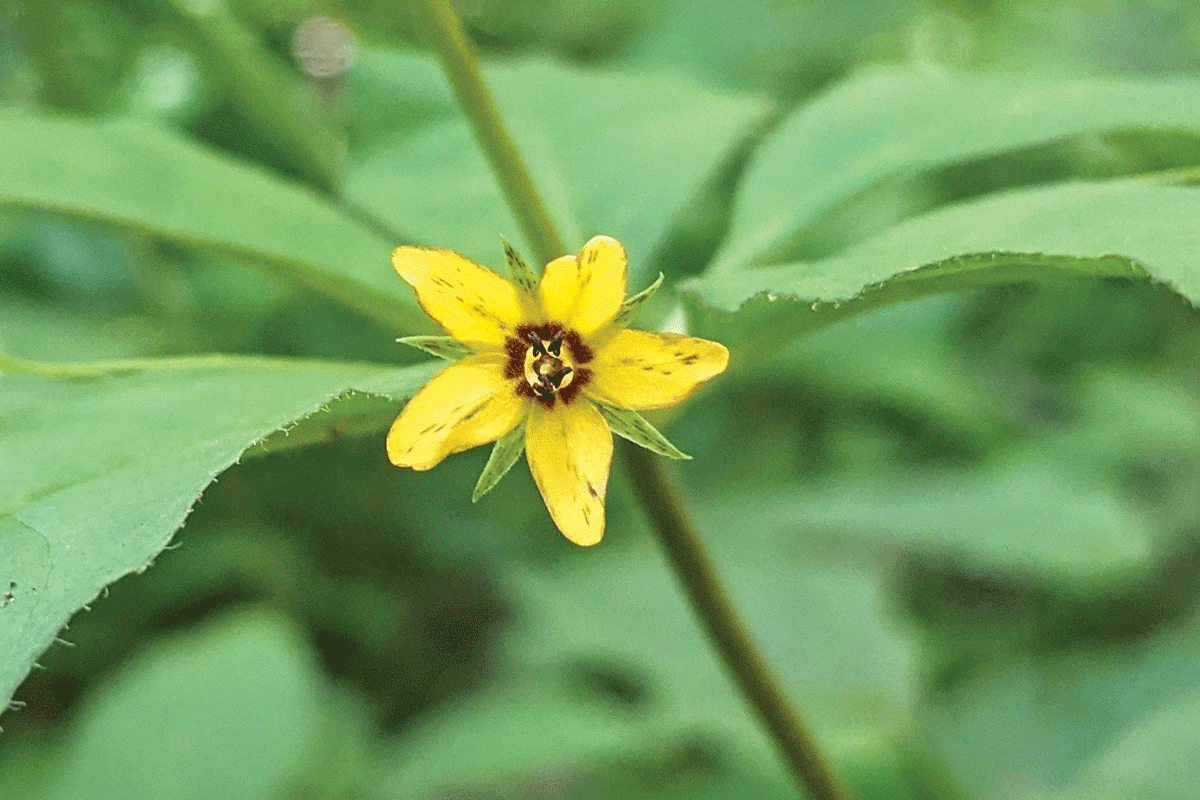Notes from a plant nerd: World, lose strife
 The whorled loosestrife grows in full sun and partial shade under deciduous trees. Adam Bigelow photo
The whorled loosestrife grows in full sun and partial shade under deciduous trees. Adam Bigelow photo
For the past few years, whenever I encounter the whorled loosestrife growing along a trail or roadside I have been saying its name out loud, and slowly. Like a prayer: “World, lose strife.”
Or so it sounds to my ears when said aloud. “World, lose strife.” And this world around us could use a lot less strife, that’s for sure.
In botanical terminology, a “whorl” is when three or more leaves emerge from the stem at the same location, called a node. This is in contrast to alternate leaf arrangement, where only one leaf grows per node and then the leaves alternate up and down the stem, or opposite leaf arrangement, which is when two leaves emerge from the stem at the same node. The whorled loosestrife usually has four leaves at every node, which is where it gets the “quadrifolia” part in its scientific name, Lysimachia quadrifolia. Quad means four, and folia means leaf.
Whorled loosestrife grows in full sun and part shade under deciduous trees. And when it is happy, it can grow in relatively large patches in the woods. They make a great addition to your shade garden, or planted along a path or trail, or in a mixed bed of native wildflowers. They are a perennial plant that can grow up to three feet tall, returning each year from their rhizome roots.
The flowers are small and yellow, sometimes with reddish streaks along the petals and edges of the petals. Each of the five yellow petals are red at their base, which forms the overall shape of a star with a red ring in the center. The flower stalk emerges from the stem where the leaves attach, which is known as the axil. Each flower lays on top of a single leaf in the four-leaved whorl. It is as if the leaf is providing support for the flowers to bloom on, and possibly a landing pad for pollinating insects as well.
Whorled loosestrife and other members of the Lysimachia genus are pollinated by specialist bees called loosestrife bees (Macropis spp.) These native bees are solitary, non-boring bees. This means that they do not live in hives or large colonies, and they do not drill or dig into wood to make their nests. Instead, they dig their nests into the ground and raise their young there. As I consider myself to be solitary and non-boring, I have an affinity for this type of native bee. They need our help maybe more so than honeybees, which are not native and are raised as agricultural products. To help them, not only can you plant and encourage whorled loosestrife around your property, but you can also leave some bare soil areas in and around your gardens to attract native ground nesting bees.
Related Items
The genus name of Lysimachia comes from Lysimachus, who was king of Macedonia in ancient Greece. It is said that King Lysimachus hung a sprig of loosestrife between two oxen who were fighting each other while yoked and pulling a cart. The plant seems to have calmed the two beasts, causing them to lose their strife and hence giving the plant the common name of loosestrife, and the genus name of Lysimachia.
Perhaps that is what is needed in our modern world of strife and of two large metaphorical beasts fighting while yoked together as they are supposed to be moving us along our path. We could hang a clump of loosestrife at state and national halls of government, just in the center of the aisle. Or, better yet, perhaps we can plant loosestrife flowers at all of our public and municipal buildings and grounds. And maybe, just maybe, this world could lose a little strife.
(Adam Bigelow lives in Cullowhee. He leads weekly wildflower walks most Fridays and offers consultations and private group tours through Bigelow's Botanical Excursions. This email address is being protected from spambots. You need JavaScript enabled to view it..)









